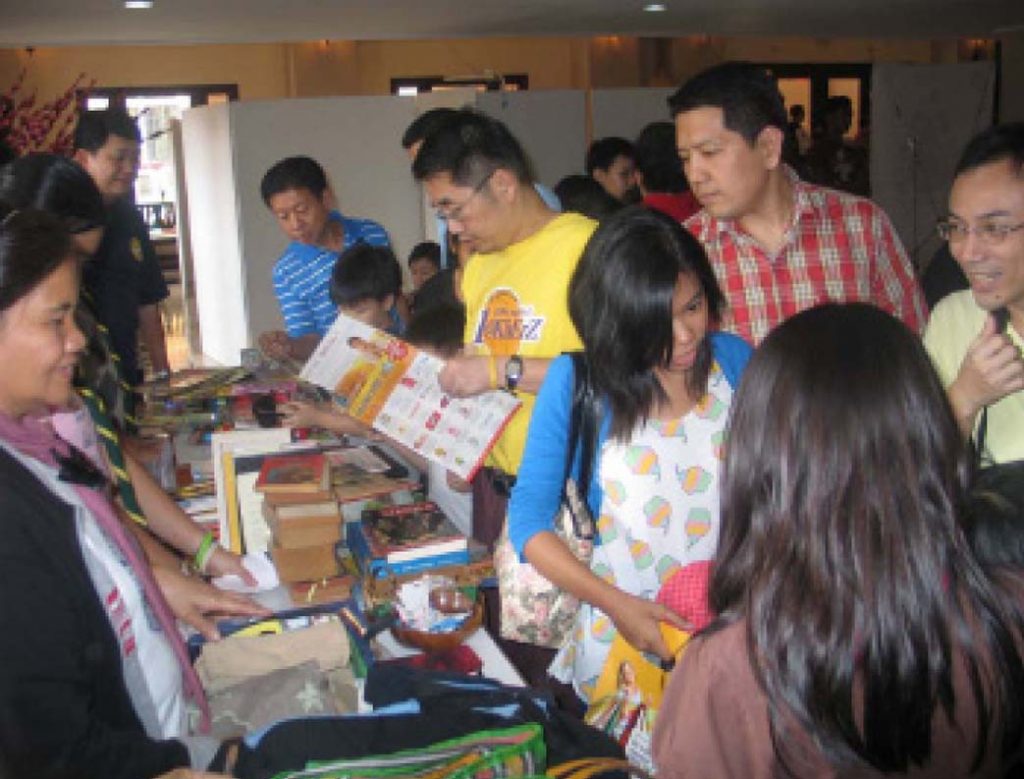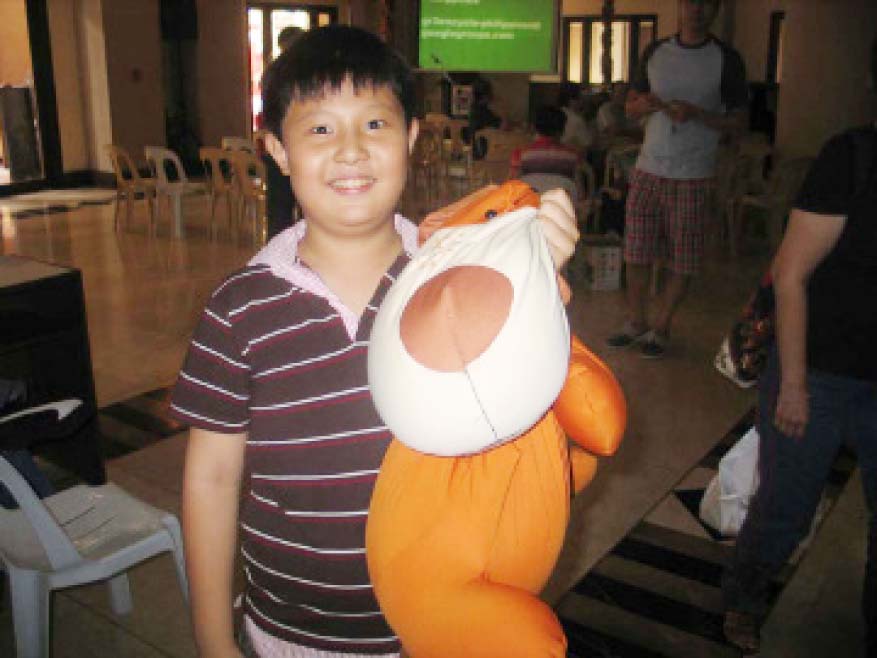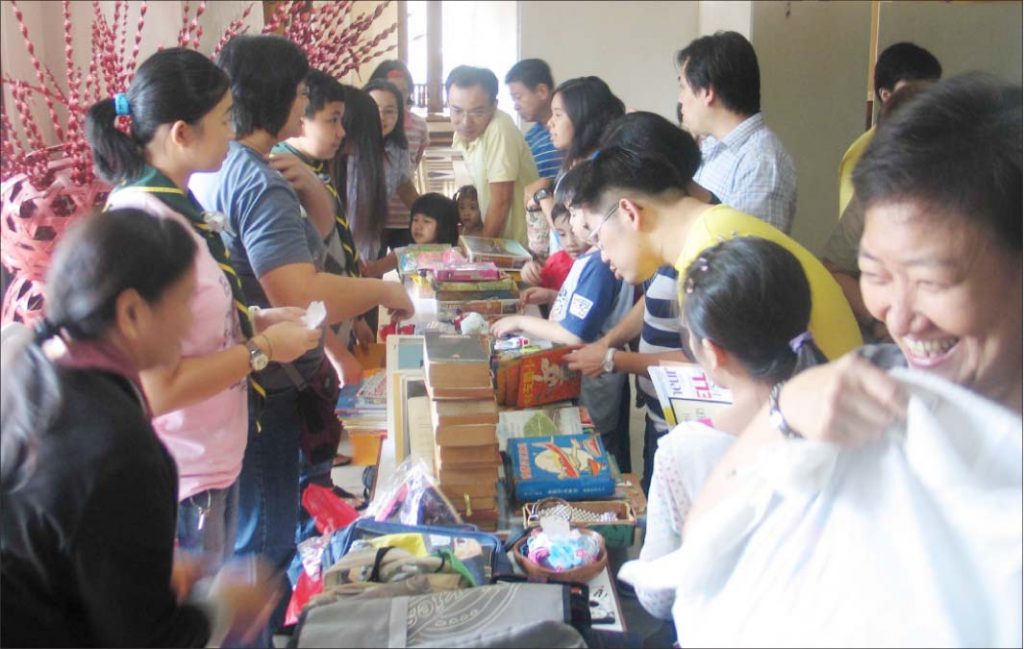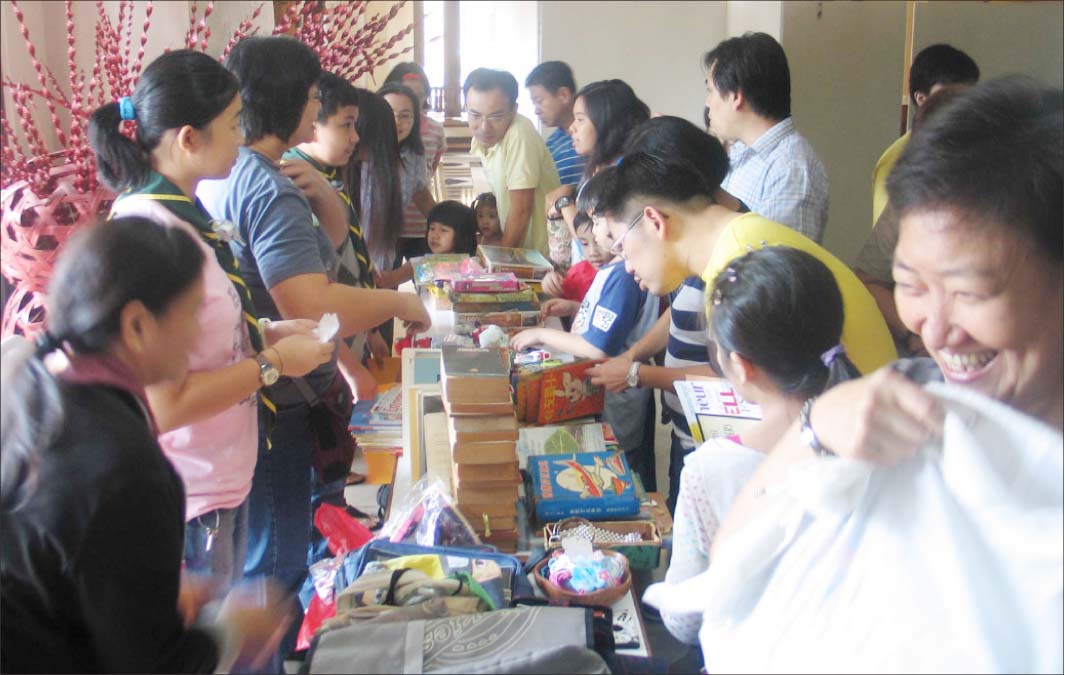First published in Tulay Fortnightly, Chinese-Filipino Digest 24, no. 7 (September 6-19, 2011): 14-15.
Ever heard of the three Rs? Most of us learned about “Reduce, Reuse, Recycle” in school. For the 24th birthday of Kaisa Para Sa Kaunlaran, we introduced the four Rs – reduce, reuse, regift, recycle – and launched the first Regift Meet along with our 10th annual blood donation drive.
Kaisa is a non-profit, nongovernment, cause-oriented organization based in Intramuros, Manila.
For 10 years running, Kaisa has invited friends, family and guests to its anniversary party to give the gift of life. Since we are on the track of giving a new lease on life for people, why not give new life to old things as well?
The concept of regifting is part of a whole approach and lifestyle to caring for the environment.

Kaisa’s Regift Meet idea came from Gr3encycle Philippines where group members give away their old but still useful things. Our first goal in helping save the environment is to reduce the purchase of unnecessary things.
Doing this means less trash in landfills and less energy use and pollution from companies having to manufacture more new items.
Reducing begins with the buying process. Recognizing the difference between need items and want items is the first step. As well, when we buy products with less packaging, we also reduce our trash output.
For example, when I buy biscuits for the kids’ snacks and baon to school, I buy the large tin or plastic tubs instead of individually wrapped ones.
I found out from a plastics recycler that snack packaging is not recyclable at all because they have an added chemical that makes them easier to tear open. I have stopped buying instant noodles for that reason. The bonus is a healthier eating habit for my family.
Reducing also means bringing home less plastic bags! Or, you can bring your own recyclable bag.
When shopping for groceries in bulk, we can always ask them to box up the groceries. When shopping for clothes and other things at the store, bring your own bag. Leave a couple in the car to have one handy at all times.

Going to Arranque or Nepa Q Mart? Bring a basket or bayong. Our househelper brings an eco bag to the wet market. She also brings along plastic take-out containers where fish and meat are immediately placed. This way, when she gets home, the containers are simply stacked inside the freezer.
And the last word on plastic bags: the words biodegradable or oxo-degradable printed on most plastic bags are deceiving.
Biodegradable should mean that the plastic bag is made of organic material. They are not. I have seen a plastic bag made of potato starch. It is quite expensive but truly organic. The texture is super smooth, even silky.
Oxo-degradable means the plastic becomes brittle and breaks down after a few years of being exposed to oxygen. What happens when the plastic breaks down? It becomes plastic dust: still plastic, floating in the air and sea, mixing with soil, and being eaten by marine life and mixing in the soil that grows our veggies. Potentially deadly.
We usually reuse without even knowing that we are helping the environment. We use old torn up clothes as rags, broken mugs as penholders, old food containers as storage.
Reusing things can be a great art project for kids. I use a big plastic biscuit tub as a trash can near my desk. My kids have changed the “design cover” countless times.
My mom is often invited to speaking engagements since the 1990s. In those days, plaques of appreciation come as wooden panels with a brass-engraved top. I now use them as photo frames and hang them on our walls or perch them on shelves.
Recycling is the most popular. In some cities, garbage trucks have schedules for which trash to pick up. My barangay recently issued a memo stating that Tuesdays are for biodegradable waste, Thursdays are for garden waste and Fridays are for recyclables. This is easier said than done. Most people do not bother to segregate properly.
For example, large milk cartons now come with plastic tabs that we just pry open. To properly segregate, the tab should go in the plastics bin, while the carton goes in the cardboard bin (although I am not sure if milk and juice cartons are recyclable since the insides are laminated with aluminum).

As part of our recycling and reusing process, we are all quite used to donating old clothes to the poor. Toys are usually passed down from child to child, and then to cousins. But what if there are no more kids to pass down to? What about household items we are tired of? What about the high-heeled shoes that do not really go into the donation pile? What about the gifts from friends (and sometimes strangers) that we do not really need or use?
Regift them!
At Kaisa’s Regift Meet, immediate past president Ganny Tan brought old puzzles that have browned with age. The kids did not mind – they were all soon at different tables breaking apart and putting them back together. The scouts who volunteered to man the regift tables were the first to snap up toys and games. Past president Ernie Chua’s grandson hankered for, and got, a huge stuffed dog. Guests who brought decorative items were quite happy to see their old frames, displays, hangings go to new homes. There was also a deluge of ladies’ bags which were immediately snapped up by “new” owners.
The old adage of “someone’s trash is someone else’s treasure” couldn’t be more apt. Make regifting part of your lifestyle – join like-minded people at Gr3encycle Philippines [email protected].
